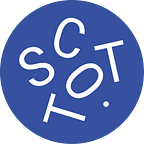--
Olympic Bid Logo | mark process
My bid city of Madrid, Spain was chosen at random. For me, any logo process begins with extensive research. We have a world of convenience like Google at our fingertips. A simple search for “Madrid” turned up a wealth of knowledge. This helps you with your mind mapping exercise. Search on a macro level, then narrow to a micro level. I used every search word from architecture to food and everything in between.
What I settled on was the Gate of Europe buildings for their emotional significance and relevance to the games, as well as their unique shape…observe things from all angles. Blur your focus and arrive at a commonality between elements that are tangible and easily rendered. With a little manipulation and thumbnailing you’ll begin to see things take shape.
Once I settled on my subject matter and exhausted the sketch process, I’ve built my intended mark…in this case it was a stylized M. I began with one shape. Make it easy on yourself! From there it is arrangement, spacing, alignment, etc. Get weird with it! Using simple thin lines allows your eye to better align and space things out. You can see what works and what doesn’t. They delete. Don’t worry!
Once the mark is established, I moved to typography. I knew that I had a very geometric mark and a short, simple name. After a quite extensive search for the right typeface family, I knew wasn’t going to find one I liked and one that would be unique enough for such a high profile event such as the olympics. The M was my base…so my M had to be the same. All I did was take a chunk of it and that dictates the rest. It’s just shapes and lines! Don’t be afraid to explore building your own typography. From there it was borrowing and creating the same style and line weight from letter to letter. Again, those lines on there help you see spacing and relationships better.
The elements in their purest form are now established. Time to arrange them. How can you see to align the M with the big M without using some simple guide lines? Here’s where you focus on spacing. Let everything breathe. I took half the thickness of the bars in the M to use as my gauge. Turned 90 degrees I used it as a tool to perfectly space away from the M and to space the year away from the full name. Notice that the full thickness of the bar is used to show how big to make the name. Method to the madness!
How does it work on a dark background? Pretty damn good! Starting to come together nicely at this point. Remember, this is the phase, along with the previous steps, where we make these rules for ourselves. It’s where all the heavy lifting takes place. So when we get down the line further we don’t run into speedbumps and hiccups. Who wants to work backwards? This type of stuff helps immensely when you eventually have to build a styleguide. Help you…help yourself! Work smart. Take your time.
Everything in its right place! Does this work as well stacked or landscape as it does in its original form? Does the name still work on its own and vice versa with the mark? Did those rules we established in the beginning come into play? On the left, the top of the name aligns with the bottom part of that M. The middle stacked version aligns side to side because I prepared for it. That landscape version to the right has the baseline align with the 3 bar.
It’s time for type and color. I chose this font (Roboto Mono) because it is a monospaced font and monoweight as well. Goes beautifully with the aesthetic of the logo.
For color, I headed back to the internet. I poured through images of Madrid. Street scenes, food, textiles, etc. I dumped these images into Ai and took eyedropper values. For me, Madrid is earthy, old world, vibrant, and a foodie destination. I developed these simple organic shapes that felt festive and food-related.
Does this palette work on a dark background? Yep! Does your font look the same on a dark background as it does on a light background. Yep!
Now I can take all this and put it together. Letting that M shape act as a mask, I can carefully arrange all of my elements inside and bring this thing home.
One more checkup to make sure it still works on a dark background. With color tweaks you establish another rule without even knowing it.
Now that I have established this thing…I can brand everything in sight. Apply to shirts, banners, buttons, toilet paper. The possibilities are endless because I was smart in the beginning to ensure that down the road this thing was gonna work, and work right. I didn’t confine myself to a logo that serves one purpose. This logo can get weird and do a million things.
Happy designing!
